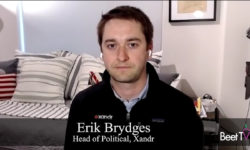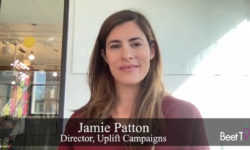This year’s midterm elections are coinciding with a major shift in people’s television viewing habits as streaming services grow more popular. Political campaigns face greater challenges in reaching broad groups of voters as people spend less time watching traditional linear TV networks, but connected TV (CTV) and over-the-top (OTT) platforms offer their own efficiencies with improved targeting.
“We’re big believers in being able to have that one-to-one relationship with your target audience,” Mark Positano, vice president of media at data and technology company i360, said in this interview with Rob Williams, senior editor for Beet.TV.
“The idea of being able to target an individual list or segment, and know that they’re having a TV-like experience on CTV or OTT, I think there’s a ton of value there,” Positano said. “If you’re getting ahead of your political cycle, the CPMs [cost per thousand] for CTV are not that high compared to other platforms.”
I360 has a database of 270 million Americans that political campaigns can use for everything from grassroots canvassing to digital targeting across social media and programmatic advertising channels.
Redistricting and Transparency Hurdles
This year’s midterms will present hurdles for candidates as electoral redistricting means incumbents will have to introduce themselves to new constituents. Another key concern is the differences in political transparency laws that require certain disclosures, such as who is paying for campaign ads.
“Being a data provider, we take this very seriously,” Positano said. “We spend a lot of resources having a robust legal house compliance team that stays up-to-date on all the different laws that are out there as well as external counsel…. That’s something that our legal team is constantly tracking.”
Finding Media-Buying Partners
Political campaigns are better off if they work with a handful of ad-buying partners, such as demand-side platforms (DSPs) that have a more holistic view of the media landscape. Because campaigns need to be nimble within a compressed cycle of driving awareness, they’re looking to simplify their buying and to implement measures such as frequency caps on ad placements. Working with dozens of vendors complicates that process.
“The more partners you’re working with, the less able you are to control that frequency, and there’re DSPs out there like Xandr who are able to curate a lot of private inventory,” Positano said. “It’s less work for those advertisers that are busy during the election cycle and don’t have time to be reaching out to every different type of inventory that’s out there. People like Xandr are making it easier for us as buyers to be doing that.”
You are watching “Programmatic and Political Advertising,” a Beet.TV Leadership Series presented by Xandr. For more videos, please visit this page.





























